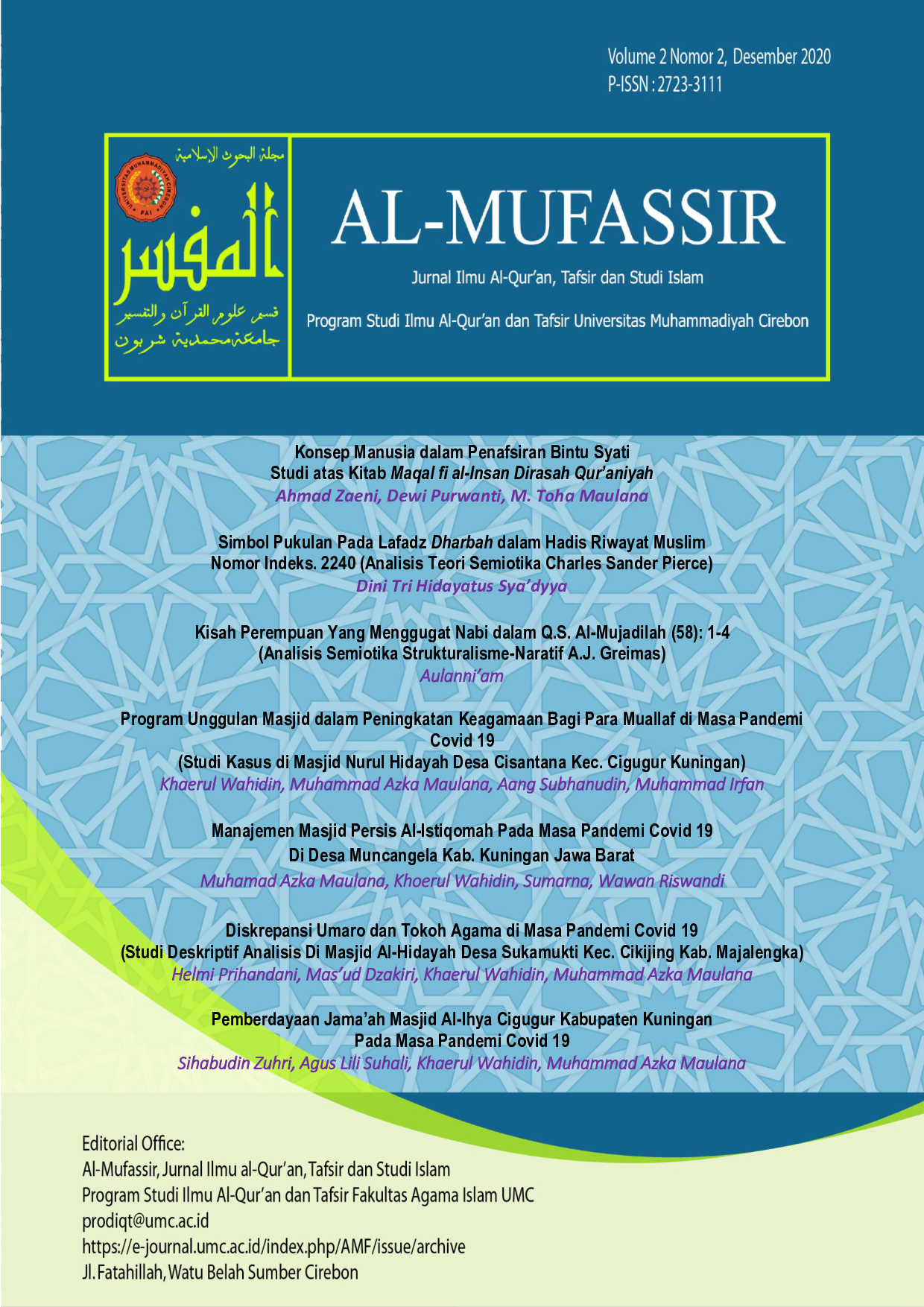Kisah Perempuan Yang Menggugat Nabi dalam Q.S. Al-Mujadilah (58): 1-4 (Analisis Semiotika Strukturalisme-Naratif A.J. Greimas)
DOI:
https://doi.org/10.32534/amf.v2i2.1634Keywords:
Khaulah binti Tsa’labah, Prosecuting, Dzihar, Al-MujadilahAbstract
Al-Qur’an, seen from different aspect of it, provides guidance and insight to its believers as their ways of life. In addition, the Al-Qur’an indeed does not merely emerge just like that. Therefore, the studies regarding Al-Qur’an is compulsory to provide an in-depth understanding and insights about it. One aspect of the Al-Qur’an is a story revealed either implicitly where the story indirectly affects the Al-Qur’an revelation or explicitly. One of the stories that is closely related to the verse in the Al-Qur’an is the story of “Women Who Prosecuted”. Khaulah binti Tsa’labah and the Prophet Muhammad play prominent role in this story prescribed in the Al-Qur’an. From this story, many interpretations occur when comprehensive readings are initiated. One of the relevant frameworks to read this story is the theory of ‘structuralism-narrative’ proposed by a linguist, A.J, Greimas. By using ‘structuralism-narrative’ theory proposed by Greimas, the story of Khaulah bint Tsa’labah will be examined comprehensively with a chronological plot to make the reading more precise. Moreover, two meaning namely physical structure meaning and inner structure meaning can be realized by using the framework of Greimas, precisely ‘structuralism-narrative’. Thus, this study aims to investigate the story of Khaulah binti Tsa’labah, seen as the nature of the verse in Surah Al-Mujadilah, by using the framework of ‘structuralism-narrative’ proposed by A.J. Greimas


